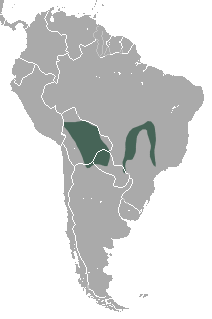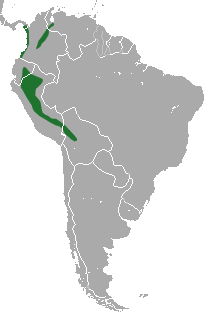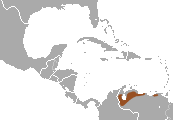| Angiostomatidae | |
|---|---|
| Scientific classification | |
| Domain: | Eukaryota |
| Kingdom: | Animalia |
| Phylum: | Nematoda |
| Class: | Chromadorea |
| Subclass: | Rhabditia |
| Family: | Angiostomatidae |
Angiostomatidae is a family of parasitic nematodes.
| Angiostomatidae | |
|---|---|
| Scientific classification | |
| Domain: | Eukaryota |
| Kingdom: | Animalia |
| Phylum: | Nematoda |
| Class: | Chromadorea |
| Subclass: | Rhabditia |
| Family: | Angiostomatidae |
Angiostomatidae is a family of parasitic nematodes.
Genera in the family Angiostomatidae include:

Opossums are members of the marsupial order Didelphimorphia endemic to the Americas. The largest order of marsupials in the Western Hemisphere, it comprises 126 species in 18 genera. Opossums originated in South America and entered North America in the Great American Interchange following the connection of North and South America.

The yellow-sided opossum is an opossum species from South America. It is found in Argentina, Brazil and Uruguay. They have grey or black fur on their dorsal side with yellowish fur on the lateral side that continues down to the feet. They are the most mysterious of all the Monodelphis that is found specifically in the Pampean region or Pampa of Argentina. It is suspected to be a once-in-a-lifetime breeder as seen in a three-year observational study of one population in the marshy grasslands of the Pampean region. Maintaining their native grasslands is important for them to keep a stable population. They show sexual dimorphism in overall size: adult males are typically 100-150 g whereas adult females are 30-70 g.

The pygmy short-tailed opossum, scientifically named Monodelphis kunsi, is an opossum species from South America. M. kunsi is a marsupial from the family Didelphidae of the order Didelphimorphia. Although it is a marsupial, it lacks the characteristic pouch that is often associated with this order. It is found in Argentina, Bolivia, Brazil and Paraguay. M. kunsi is considered a smaller species within the family Didelphidae, which is why it is named a pygmy opossum. The young are referred to as 'joeys'. The females are referred to as 'Jill,' and the males 'jack'. It was thought to have been endangered in 2001, but has since been moved to least concern by the International Union for Conservation of Nature.

The chestnut-striped opossum is an opossum species from South America. It is found in Brazil. More specifically, it is found in East and Central Brazil, including areas such as Goiás, Minas Gerais, and São Paulo. It is terrestrial and is active around twilight. There has been a population depletion of about 20% in the last 10 years due to deforestation and habitat loss. It is nearing Threatened, but the exact number of their species in unknown.

The southern red-sided opossum is an opossum species from South America. It is found in Argentina, Brazil and Paraguay.

The sepia short-tailed opossum is a species of opossum in the family Didelphidae found in Colombia, Ecuador, Panama, Peru and Venezuela.

The Amazonian red-sided opossum is a South American opossum species of the family Didelphidae, formerly viewed as part of M. brevicaudata. It is found in Bolivia, Brazil and Peru, where it inhabits the Amazon rainforest. It is omnivorous, nocturnal, and primarily nonarboreal.

The hooded red-sided opossum is a South American opossum species of the family Didelphidae. Until recently, it was viewed as a subspecies of M. brevicaudata. It is found in Colombia and Venezuela at altitudes from sea level to 2250 m. It is a primarily nonarboreal resident of tropical rainforest, but has also been seen in areas under cultivation.
Angiostoma is a genus of parasitic nematodes in the family Angiostomatidae.
Agfa is the only genus in the parasitic nematode family Agfidae. There are only three known species: Agfa flexilis, A. morandi and A. tauricus. They are all obligate parasites in terrestrial gastropods.
Angiostoma schizoglossae is a species of parasitic nematodes.
Angiostoma carettae is the first species of nematodes known to inhabit turtles. Its specific name comes from its presence in loggerhead sea turtles.
Eutrombicula batatas is a species of chigger.

Phasmarhabditis hermaphrodita is a facultative parasitic nematode that can kill slugs and snails. It belongs to the family Rhabditidae, the same family as Caenorhabditis elegans.

Guido T. Poppe is a Belgian malacologist, shell dealer and author of more than 20 books and publications about shells, mainly about the families Volutidae and Trochidae.

Gastrocoptidae is a family of minute, air-breathing land snails, terrestrial pulmonate gastropod molluscs in the superfamily Pupilloidea.